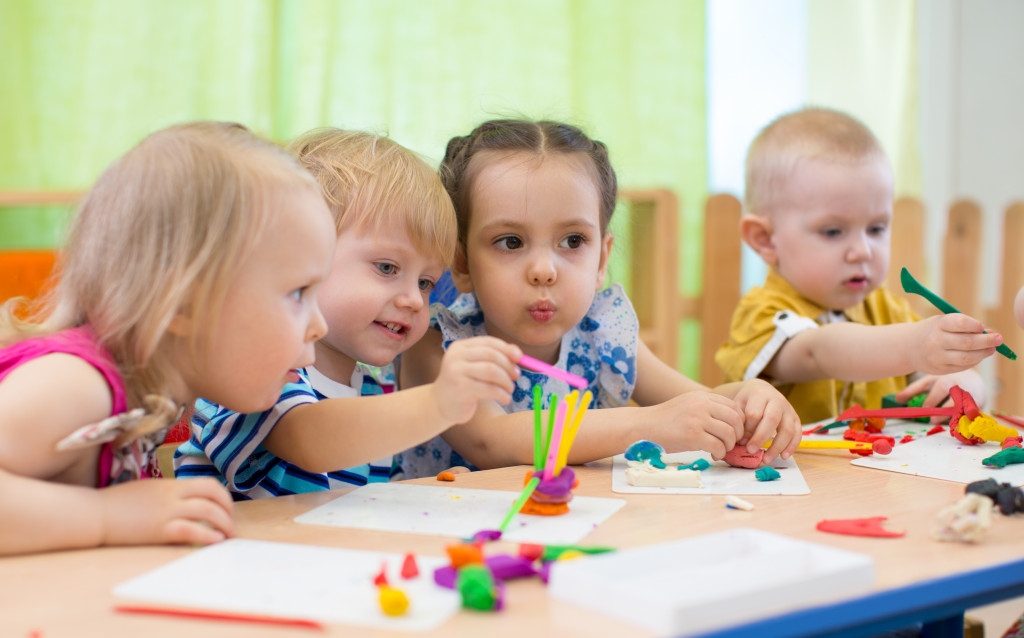Teachers play an important role in creating safe environments for students with learning disabilities. Inclusive classrooms can provide opportunities for all students to succeed and feel supported. Here are six tips for teachers to create inclusive classrooms. These tips can help you create a classroom environment that is safe and supportive for all students, including those with learning disabilities.
#1. Get to Know Your Students & Their Needs
The first step in creating an inclusive classroom is to get to know your students and their needs. Ask questions, observe their behavior and interactions, and talk to their parents or guardians. By understanding each student’s learning disability and how it affects them, you can better adjust your teaching methods.
For example, a student with ADHD might benefit from having a seat near the front of the class, so they are less likely to be distracted. Or a student who is blind might need extra time to complete assignments.
#2. Set Ground Rules & Expectations Together
Setting ground rules and expectations together is a key way to promote positive behavior and prevent problems from arising. This can be done through class meetings or surveys at the beginning of the year. Asking students about their thoughts on rules and expectations will help them feel more invested in following them.
And when everyone is clear on what the rules are, it’s easier to manage any missteps. For example, if a rule is “no put-downs,” then students will know that name-calling is not allowed and can be held accountable if they do it.
#3. Use Classroom Routines & Structures Consistently
Classroom routines and structures provide predictability for students, which can help reduce stress and anxiety. When students know what to expect, they can focus on learning instead of worrying about the unknown. Routines should be simple and easy to follow so that students can remember them without difficulty.
For example, having a set time for lunch or packing up at the end of the day can help ease transitions between activities. And starting each day with a greetings routine (e.g., shaking hands or high-fives) can help build positive relationships between teacher and student, as well as among classmates.

#4. Incorporate Flexible Seating & Grouping Options
Flexible seating and grouping options give students a choice in how they learn, which can promote engagement and cooperation. By letting students choose where they sit or who they work with, you’re giving them a sense of control over their learning environment. This can be especially helpful for students who feel anxious or overwhelmed in large groups.
For example, you might let students sit on the floor, at a table, or on a bean bag chair during class. Or you might let them choose to work alone, with a partner, or in a small group. You can also give students the option to move around the room or take breaks as needed.
#5. Suggest Therapy & Support Services
If you’re concerned about a student’s well-being, suggest therapy or support services. These services can help students with learning disabilities manage their symptoms and succeed in school. Many schools have counselors or social workers who can provide individual or group counseling.
There are also child cognitive behavioral therapy programs that can be helpful for students with anxiety or depression. Also, students with ADHD can take advantage of these types of services. No matter what, always consult with a student’s parent or guardian before suggesting any type of therapy or support service. If you’re not sure where to start, ask your school’s guidance counselor for suggestions.
#6. Use Positive Language & Encouragement
Using positive language and encouragement is a powerful way to build students up and promote positive behavior. When you focus on what students are doing right, they are more likely to continue those behaviors. And when you use encouraging words, students feel appreciated and motivated.
For example, instead of saying, “Don’t forget to raise your hand,” you could say, “I love it when you raise your hand before speaking.” Or instead of saying, “No running in the hallway,” you could say, “I feel so much safer when everyone walks in the hallway.” When you use positive language, students feel good about themselves and are more likely to follow your rules.
Creating an inclusive classroom doesn’t have to be daunting — small changes can make a big difference for students with learning disabilities. By following these tips, you can ensure that all of your students feel safe, supported, and ready to learn! So give them a try and see how they work for you and your students.

